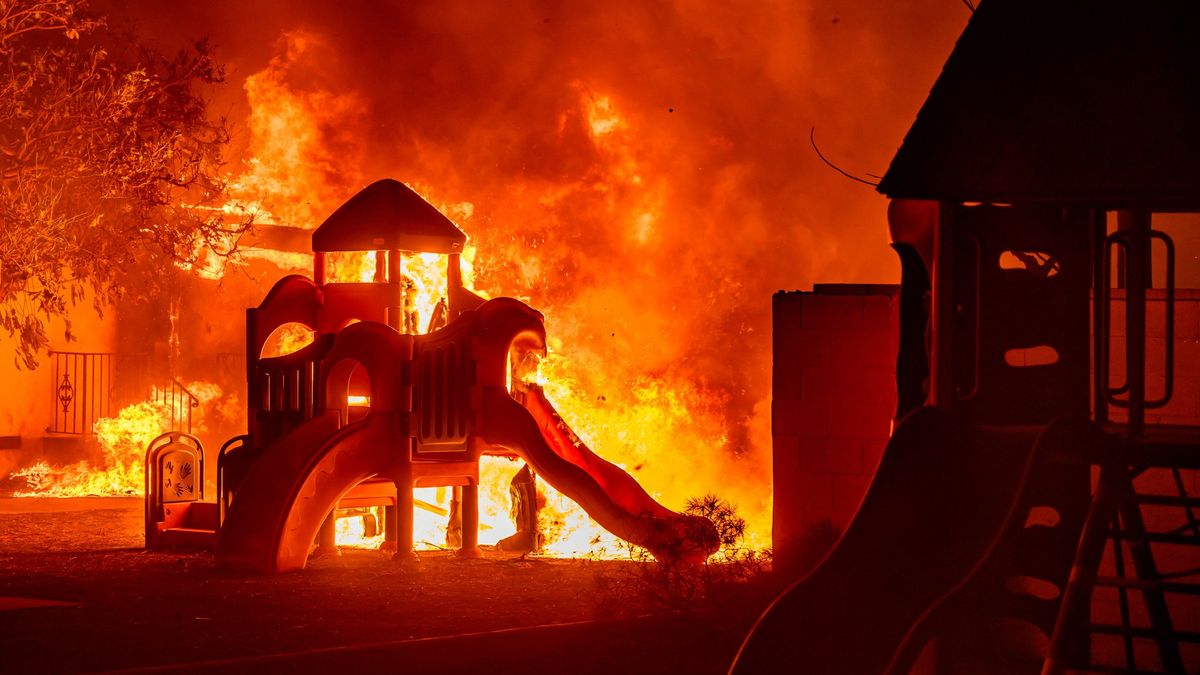Reimagining Resilience: The Future of Fire-Prone Neighborhoods in Los Angeles
As the specter of wildfires looms larger over California, Los Angeles faces a pivotal moment. The question is not merely whether to rebuild fire-prone neighborhoods but how to rethink urban planning for a safer, more resilient future. With the increasing frequency and intensity of wildfires, the decision to rebuild carries with it significant implications for safety, sustainability, and community well-being.
The Landscape of Los Angeles: A Fire-Prone Reality
Los Angeles, with its beautiful landscapes and vibrant communities, is no stranger to wildfires. The city’s proximity to dry brush, coupled with Santa Ana winds, creates a perfect recipe for devastating fires. According to CAL FIRE, nearly 1.5 million acres burned in California in 2020 alone, underscoring the urgency of addressing this threat. Areas like the San Fernando Valley, Angeles National Forest, and Malibu are particularly vulnerable, prompting residents and policymakers to rethink their approaches to urban planning.
Challenges of Rebuilding Fire-Prone Neighborhoods
Rebuilding in fire-prone areas presents numerous challenges:
- Infrastructure Vulnerability: Traditional building materials and designs may not withstand intense heat or embers from wildfires. This necessitates a reevaluation of construction codes and practices.
- Environmental Impact: Rebuilding can further strain local ecosystems, particularly if the construction disrupts natural firebreaks or encourages more development into wildland areas.
- Community Anxiety: Residents may feel a sense of vulnerability and anxiety about rebuilding in areas that have been previously devastated by fires. This psychological impact should not be underestimated.
Rethinking Urban Planning: A New Approach
The future of fire-prone neighborhoods in Los Angeles may lie in a comprehensive reimagining of urban planning. Here are several strategies that could contribute to a more resilient city:
1. Implementing Fire-Resistant Building Codes
One of the most effective ways to enhance resilience is through stringent building codes that require fire-resistant materials and designs. Homes and businesses in fire-prone areas should be constructed with:
- Non-combustible materials: Use of stucco, metal, and tempered glass can significantly reduce fire risk.
- Defensible space: Establishing buffer zones around properties can help slow the spread of fires.
2. Creating Green Infrastructure
Integrating green infrastructure into urban planning can help mitigate fire risks while improving overall community resilience. This includes:
- Vegetation management: Regularly maintaining and thinning vegetation can reduce fuel loads.
- Firebreaks: Establishing strategic firebreaks using landscaping can help contain wildfires when they occur.
3. Community Education and Engagement
Empowering residents through education about fire risks and preparedness is crucial. Community programs can provide:
- Workshops: Teaching residents about fire-resistant landscaping and home hardening.
- Emergency plans: Encouraging families to create emergency plans and evacuation routes can save lives.
4. Smart Development Practices
Urban planners must prioritize smart growth strategies to limit development in the most vulnerable areas. This might involve:
- Restricting new construction: Limiting permits for new homes in high-risk zones.
- Promoting infill development: Encouraging development in existing urban areas to reduce pressure on wildland interfaces.
Innovative Solutions: Technology and Community Collaboration
Embracing technology can also play a significant role in enhancing resilience. For instance:
- Fire detection systems: Advanced fire detection technologies can provide early warnings to residents and emergency services, allowing for quicker responses.
- Data analytics: Utilizing data to understand fire patterns and risks can inform better planning and response strategies.
Community collaboration is equally vital. Local governments, non-profits, and residents must work together to share resources, knowledge, and support networks. Establishing community fire readiness groups can foster a sense of collective responsibility and preparedness.
The Role of Policy and Governance
Policy decisions will play a crucial role in shaping the future of fire-prone neighborhoods. State and local governments must:
- Allocate funding: Invest in fire prevention programs and infrastructure improvements.
- Update land-use policies: Ensure that zoning laws reflect the risks associated with wildfires.
As part of this effort, engaging with residents in the decision-making process is essential. Public forums and workshops can provide platforms for citizens to voice concerns, share experiences, and contribute to the planning process.
Conclusion: A Resilient Future is Possible
Reimagining resilience in Los Angeles is an urgent necessity as the threat of wildfires continues to grow. By rethinking urban planning, implementing innovative solutions, and fostering community engagement, Los Angeles can pave the way for a safer, more sustainable future. The journey will undoubtedly be challenging, but with collective effort and a commitment to resilience, it is possible to create fire-prone neighborhoods that not only survive but thrive amidst the changing climate.
Ultimately, the choice lies with the citizens and leaders of Los Angeles: will they embrace the challenge of reimagining resilience? The future of their neighborhoods depends on it.
See more Your Daily Weather



